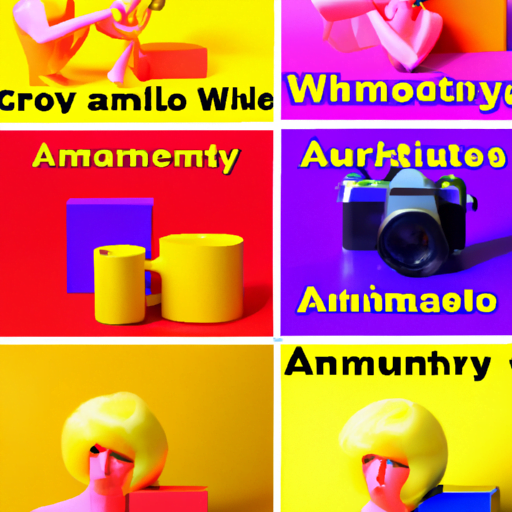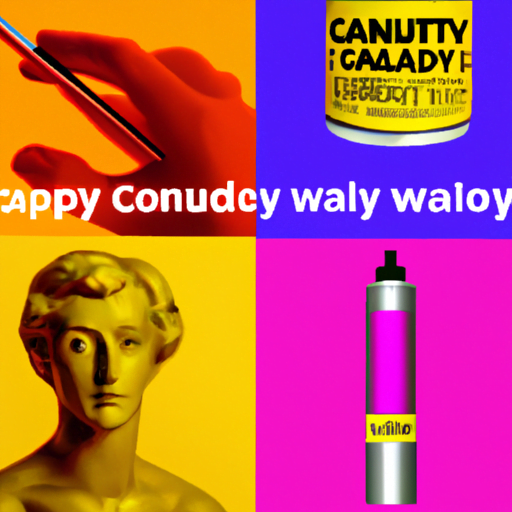
-
Table of Contents
Embracing Whimsy: Adding Playfulness to Design Projects

Design is often seen as a serious and structured discipline, focused on functionality and aesthetics. However, there is a growing recognition of the value of incorporating playfulness and whimsy into design projects. Embracing whimsy can bring a sense of joy, surprise, and creativity to design, making it more engaging and memorable for users. In this article, we will explore the benefits of adding playfulness to design projects and provide insights on how to effectively incorporate whimsy into your designs.
The Power of Playfulness
Playfulness has a profound impact on human psychology. It stimulates curiosity, encourages exploration, and fosters a sense of delight. When applied to design, playfulness can create a positive emotional connection between users and the product or service. It can make the experience more enjoyable, increase user engagement, and even enhance problem-solving abilities.
Research has shown that playfulness can improve cognitive function and creativity. In a study conducted by the University of California, participants who engaged in playful activities performed better on creative problem-solving tasks compared to those who did not. This suggests that incorporating playfulness into design projects can not only make them more enjoyable but also enhance the user’s ability to think creatively and find innovative solutions.
Examples of Playful Design
There are numerous examples of successful design projects that have embraced whimsy and playfulness. One notable example is the Google homepage. Google often changes its logo to celebrate holidays, events, and famous personalities. These playful doodles not only add visual interest but also create a sense of anticipation and surprise for users. They have become a signature element of the Google brand, making the search engine more than just a functional tool.
Another example is the MailChimp logo. The logo features a playful and whimsical chimpanzee, which adds a sense of fun and approachability to the brand. This playful element has helped MailChimp stand out in a crowded market and has become a recognizable symbol of their brand identity.
Playfulness can also be seen in physical product design. The Dyson vacuum cleaner, for instance, features a transparent dustbin that allows users to see the dirt being collected. This playful design element transforms a mundane household chore into a visually engaging and even satisfying experience.
How to Incorporate Whimsy into Design
Adding playfulness to design projects requires careful consideration and a deep understanding of the target audience. Here are some strategies to effectively incorporate whimsy into your designs:
1. Surprise and Delight
One way to add playfulness to design is by incorporating elements of surprise and delight. This can be achieved through unexpected interactions, hidden features, or Easter eggs. For example, the popular video game “Fortnite” often includes hidden challenges or secret locations that players can discover, adding an element of surprise and excitement to the gameplay.
2. Visual Metaphors
Visual metaphors can be a powerful tool for adding playfulness to design. By using familiar objects or symbols in unexpected ways, designers can create a sense of whimsy and intrigue. For example, the Twitter logo, which features a bird, is a visual metaphor for the act of tweeting. This playful representation adds personality and charm to the brand.
3. Interactive Elements
Interactive elements can make design projects more engaging and playful. This can include interactive animations, games, or user-controlled features. For example, the Nike+ app allows users to track their running progress and compete with friends, turning the act of running into a playful and social experience.
4. Color and Typography
Color and typography can also be used to add playfulness to design. Bright and vibrant colors can evoke a sense of joy and energy, while playful typography can add a whimsical touch. For example, the Candy Crush Saga game uses a colorful and playful typography that matches the game’s fun and addictive nature.
Case Study: Slack
Slack, the popular team collaboration tool, is a great example of a design project that has successfully embraced playfulness. The Slack interface features playful illustrations, animations, and even custom emojis. These elements not only add visual interest but also create a sense of fun and camaraderie among team members.
Slack’s playful design has contributed to its success by making the platform more engaging and enjoyable to use. It has also helped differentiate Slack from its competitors and establish a strong brand identity. The playful elements in Slack’s design reflect the company’s values of creativity, collaboration, and fun.
The Benefits of Whimsical Design
Embracing whimsy in design projects offers several benefits:
- Increased User Engagement: Playful design elements can capture users’ attention and encourage them to interact with the product or service.
- Enhanced Brand Identity: Whimsical design can help differentiate a brand from its competitors and create a memorable and recognizable identity.
- Improved User Experience: Playfulness can make the user experience more enjoyable, leading to increased satisfaction and loyalty.
- Boosted Creativity: Playful design can stimulate creative thinking and problem-solving abilities, both for designers and users.
Conclusion
Embracing whimsy in design projects can have a profound impact on user engagement, brand identity, and overall user experience. By incorporating elements of surprise, visual metaphors, interactivity, and playful colors and typography, designers can create memorable and enjoyable experiences for users. The success of companies like Google, MailChimp, and Slack demonstrates the power of playfulness in design. So, the next time you embark on a design project, don’t be afraid to embrace whimsy and add a touch of playfulness to captivate your audience.
